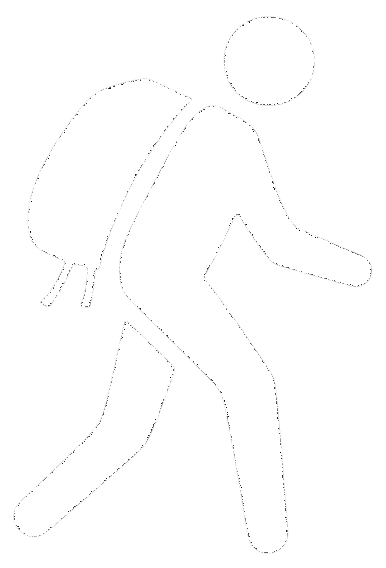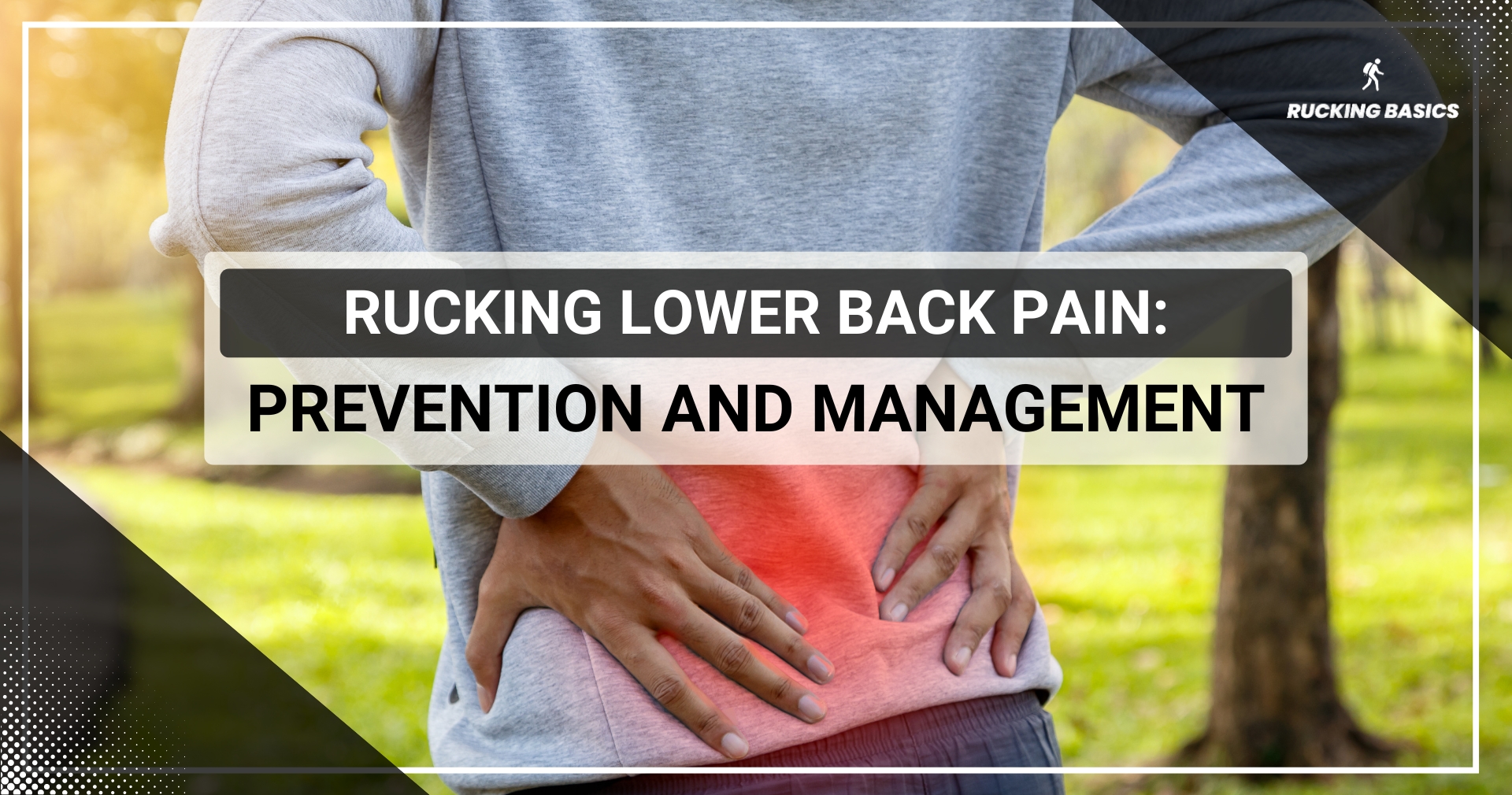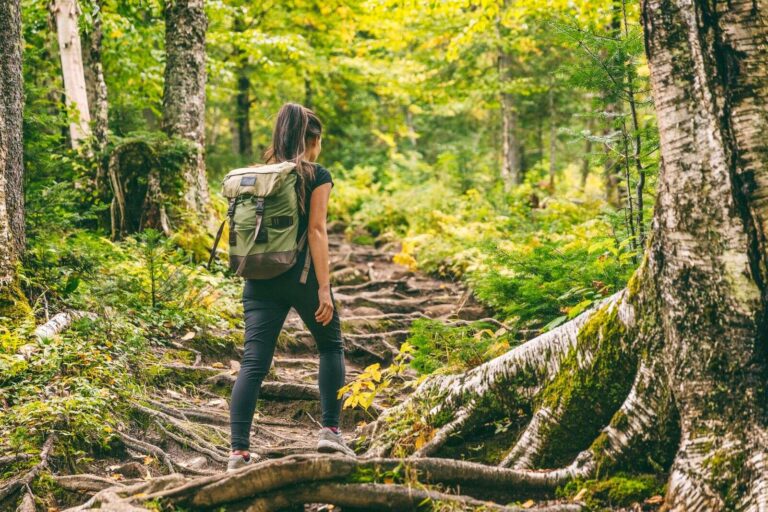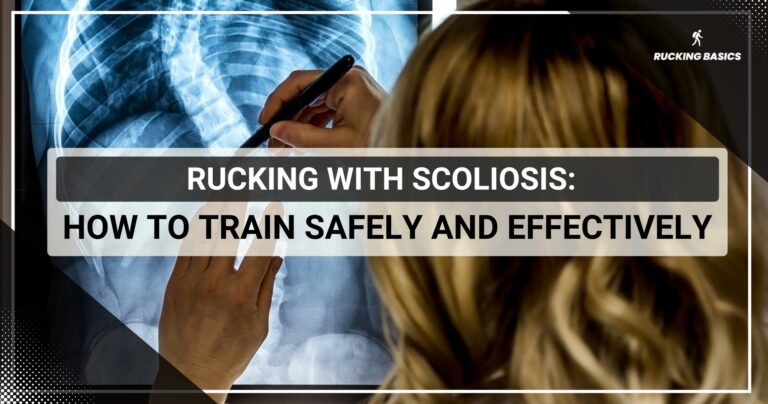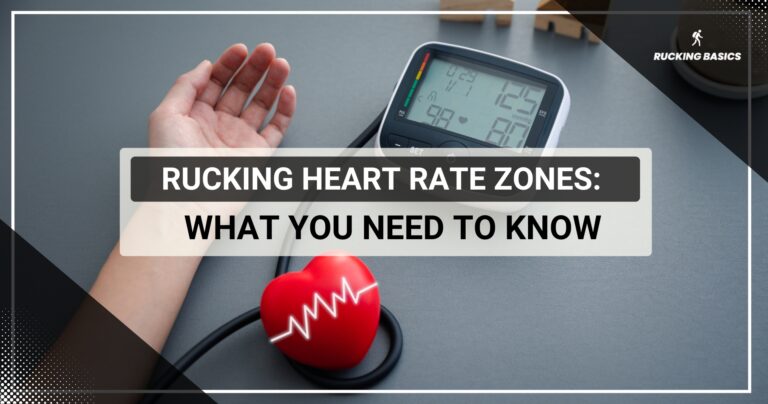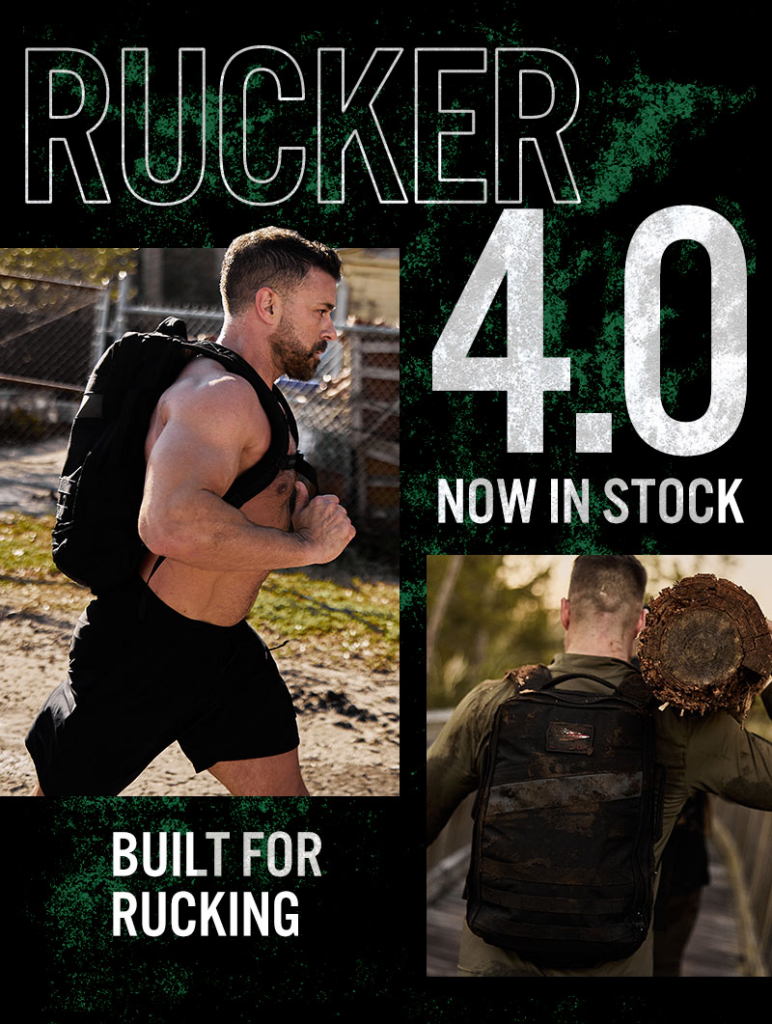Since lower back pain (LBP) is so common, we often fail to acknowledge how many people actually suffer from this problem. According to the WHO, over half a billion people were affected by LBP in 2020. Also, the study showed that LBP is the leading global cause of years lived with disability (YLDs), staggering data if you ask me. (1) (2) Lower back pain during rucking is one of the most common concerns among ruckers, too.
Pain occurs in other parts of the back as you ruck, but less often than in the lower part. I know it can be very painful and scary, making you quit rucking, but don’t jump to conclusions.
In this guide, I aim to demystify the complex relationship between rucking and lower back discomfort.
Understanding Lower Back Pain
To make a connection with rucking, we have to start by understanding causes, misconceptions, and other general aspects of LBP.
Causes
In many cases, determining the cause of lower back pain is the most complicated. It is often a multifaceted issue with a variety of potential causes.
Let’s say you experience muscular strain from overexertion, improper lifting techniques, or have herniated discs or sciatica. (3) In that case, the problem is obvious, and the approach to solving it is straightforward. (4)
But it could also be poor posture, weak core muscles, or something hidden. The number of doctors you will have to see usually depends on how apparent the cause is.
How Lower Back Pain Affects Daily Life and Physical Activity?
Lower back pain isn’t just a problem during rucking sessions; it can significantly impact overall quality of life. When I had a problem with the QL muscle in my lower back, even simple tasks like bending over to tie shoes or lifting groceries were painful, not to mention the gym, rucking, or tennis.
Ignoring lower back pain can lead to more than just discomfort. It will result in frustration, decreased motivation, and even long-term injury risks.
Common Misconceptions
I don’t know how many myths I’ve heard about back pain. It is a pain surrounded by most misconceptions, for sure. One of the main culprits is Dr. But McGill, who is certainly not the only one.
You will often hear that rest is the best remedy for lower back pain, tendon problems, and other conditions. While short-term rest may provide relief, prolonged inactivity will weaken muscles and exacerbate discomfort.
Another misconception is that lower back pain is an inevitable consequence of aging. Aging can cause degenerative disc disease, for example, but it does not mean that pain is unavoidable.
To mention a few more — surgery is the only solution for chronic lower back pain; you shouldn’t band your back, but keep it “neutral,” and skinny people won’t have back problems. Please don’t believe in any of this, and don’t let those misconceptions affect your ruck.
The Connection Between Rucking and Lower Back Pain
We have to talk about biomechanics a bit.
Rucking is walking with a loaded ruck sack so it imposes significant demands on the body’s biomechanics, significantly more than regular walking. The spine is particularly affected. The motion of walking combined with the added weight of the backpack places stress on the spinal structures — vertebrae, discs, and surrounding muscles.
Understanding the importance of rucking posture is crucial to minimize strain on your lower back. Poor biomechanics, like rounding the back or leaning excessively forward, can increase discomfort and even lead to injury. Proper posture not only helps distribute the load evenly but also makes your rucking sessions safer and more enjoyable.
Another way is to reduce the weight in the backpack and thus burden your back less.
Those with pre-existing back issues must be extra cautious, just as they would when engaging in other high-impact activities like running.
If you have herniated discs, spinal stenosis, or other chronic conditions, you will probably need physical therapy and to start a weight loss process (if you have excessive body weight) before you can ruck safely and painlessly. After that, rucking can improve your bone health and bone density.
Preventing Lower Back Pain in Rucking
I have already talked about the importance of proper technique and form, both closely related to biomechanics.
In addition, a suitable training plan and high-quality equipment can also prevent or stop lower back pain during ruck sessions.
Strengthening Exercises for the Core and Lower Back
Rucking works many muscle groups in our bodies, which is one of the main reasons why we consider rucking beneficial. Yet, rucking requires a strong back, core, and other parts to avoid pain and problems during long walks.
Let’s stick with LBP. To solve it, focus on exercises that simultaneously target the core and back muscles, such as planks, bridges, and deadlifts. I find back extensions and Superman exercise very effective as well. Other compound exercises will also help to bulletproof your lower back and ruck faster.
Don’t underestimate your core’s role in this equation. A strong core, including the abdominals and lower back, ensures proper posture during rucking and minimizes strain. For a deeper dive, check out this helpful guide on building rucking abs. It covers strategies to make your core work smarter, not harder, during rucking.
Tightness in the muscles surrounding the hips and hamstrings can cause back pain, too, so don’t overlook flexibility and mobility. It is equally helpful as strength training, so ask you personal trainer to include it.
Rucking Gear List
Over the years in different sports and activities, including rucking, I realized that the right shoes are crucial. I’m not saying that only for lower back pain, but in general for the prevention of injuries and problems. Adding insoles can make the situation even better.
In the case of rucking, a rucking backpack is equally essential. Just any rucksack for training is not enough — you need one that is made specifically for this purpose. It will safeguard your back from excessive stress.
Other pieces of gear like pants, moisture-wicking clothes, and watch will definitely make your ruck much more comfortable, but it doesn’t have that much impact on LBP.
Managing Lower Back Pain During Rucking
You did everything right, but lower back pain appeared after an hour or two of rucking. It is certainly possible, and at that moment, you don’t want to stop. You can do a few things at that point and maybe end your expedition the way you wanted.
When lower back pain strikes, it’s crucial to make some adjustments. Start by adjusting your weighted backpack straps and, if you’ve removed it, reapply your sternum strap. A back brace sometimes helps, too, or some other kind of support for the lower back.
Maybe you felt pain because you hadn’t taken a break for hours. So stop, take off your backpack, stretch, and see if you feel better.
If the pain continues to increase, it is best to stop the ruck to avoid making the situation worse.
It’s also worth considering whether the pain is a result of improper load distribution or bad posture. Sometimes, despite your best efforts, rucking could lead to discomfort. If you’re concerned about potential risks, it’s helpful to learn if rucking can be bad for your health and what to watch out for to avoid long-term issues.
Also, check out our article on rucking with a herniated disc for insights on managing back health while rucking.
When to Seek Professional Help?
We at RuckingBasics are experienced ruckers and fitness coaches, but we are not doctors, nor do we intend to be. So, none of the advice we gave you should be a substitute for professional medical advice.
Symptoms like numbness, tingling, or weakness in your legs require you to see a doctor ASAP. The same goes for sudden injury or trauma.
If you don’t have such serious symptoms, but lower back pain persists even after you’ve strengthened your core, become more flexible, changed equipment, and improved form, then that’s also a signal it’s time to seek medical guidance.
Ignoring these signs could prolong your discomfort and lead to further complications.
I suggest going to a physician, not a chiropractor, or similar professions.
Conclusion
Rucking offers so many benefits for your physical health and mental well-being. Remember, don’t let lower back pain discourage you from improving your cardiovascular fitness through rucking.
Of course, if the pain is constant and worsens after ruck marching, you should consult a doctor. But back pain is frequently “non-specific,” meaning we don’t know the cause. Even MRI and other advanced imaging methods cannot give us the answer.
So, you must try to understand the causes of lower back pain, do workouts regularly, improve your technique, buy proper equipment, and maybe temporarily reduce weight. After that, you can continue to ruck if there is no structural damage. Chances are that your condition will improve as you progressively get stronger due to rucking.
Frequently Asked Questions
Is there a specific weight limit recommended for rucking to prevent lower back pain?
I can’t tell you the exact weight limit that won’t hurt your back nor endanger your cardiovascular health. Everyone is different, so there isn’t a one-size-fits-all weight limit for rucking. Good advice I got from experienced ruckers when I was a beginner is to start with a lighter load and gradually increase the weight to a level that challenges you without causing excessive stress on your lower back.
Can wearing a weighted vest instead of a backpack reduce the risk of lower back pain?
Suppose you don’t have a backpack suitable for rucking nor ruck plate. In that case, a weighted vest can reduce the risk of lower back pain because it distributes the load more evenly across the body than an inappropriate backpack. However, weighted vest won’t necessarily reduce lower back pain problems if you have a good backpack. In that case, the cause is probably not the backpack/vest but something else. Anyway, experiment with different gear options to find what works best for your body.
Should you use walking poles or sticks while rucking to alleviate pressure on the lower back?
Walking poles can alleviate pressure on the lower back by redistributing some load to the upper body and providing additional stability and support. This can be especially beneficial when going on uneven terrain or carrying heavier loads. However, I find walking poles very uncomfortable and often annoying, so you will have to try it and see.
Does rucking on different surfaces impact lower back pain?
Yes, the surface you ruck on can impact lower back pain. Trails with natural terrain offer more cushioning and shock absorption than hard surfaces like pavement, directly reducing strain on the lower back. The situation is the same in tennis, for example, where the clay surface is less taxing on the whole body compared to hard courts.
References
- https://www.who.int/news-room/fact-sheets/detail/low-back-pain
- Wu A, March L, Zheng X, Huang J, Wang X, Zhao J, Blyth FM, Smith E, Buchbinder R, Hoy D. Global low back pain prevalence and years lived with disability from 1990 to 2017: estimates from the Global Burden of Disease Study 2017. Ann Transl Med. 2020 Mar;8(6):299. doi: 10.21037/atm.2020.02.175. PMID: 32355743; PMCID: PMC7186678.
- Koes BW, van Tulder MW, Peul WC. Diagnosis and treatment of sciatica. BMJ. 2007 Jun 23;334(7607):1313-7. doi: 10.1136/bmj.39223.428495.BE. PMID: 17585160; PMCID: PMC1895638.
- Mauck MC, Aylward AF, Barton CE, Birckhead B, Carey T, Dalton DM, Fields AJ, Fritz J, Hassett AL, Hoffmeyer A, Jones SB, McLean SA, Mehling WE, O’Neill CW, Schneider MJ, Williams DA, Zheng P, Wasan AD. Evidence-based interventions to treat chronic low back pain: treatment selection for a personalized medicine approach. Pain Rep. 2022 Sep 30;7(5):e1019. doi: 10.1097/PR9.0000000000001019. PMID: 36203645; PMCID: PMC9529058.
